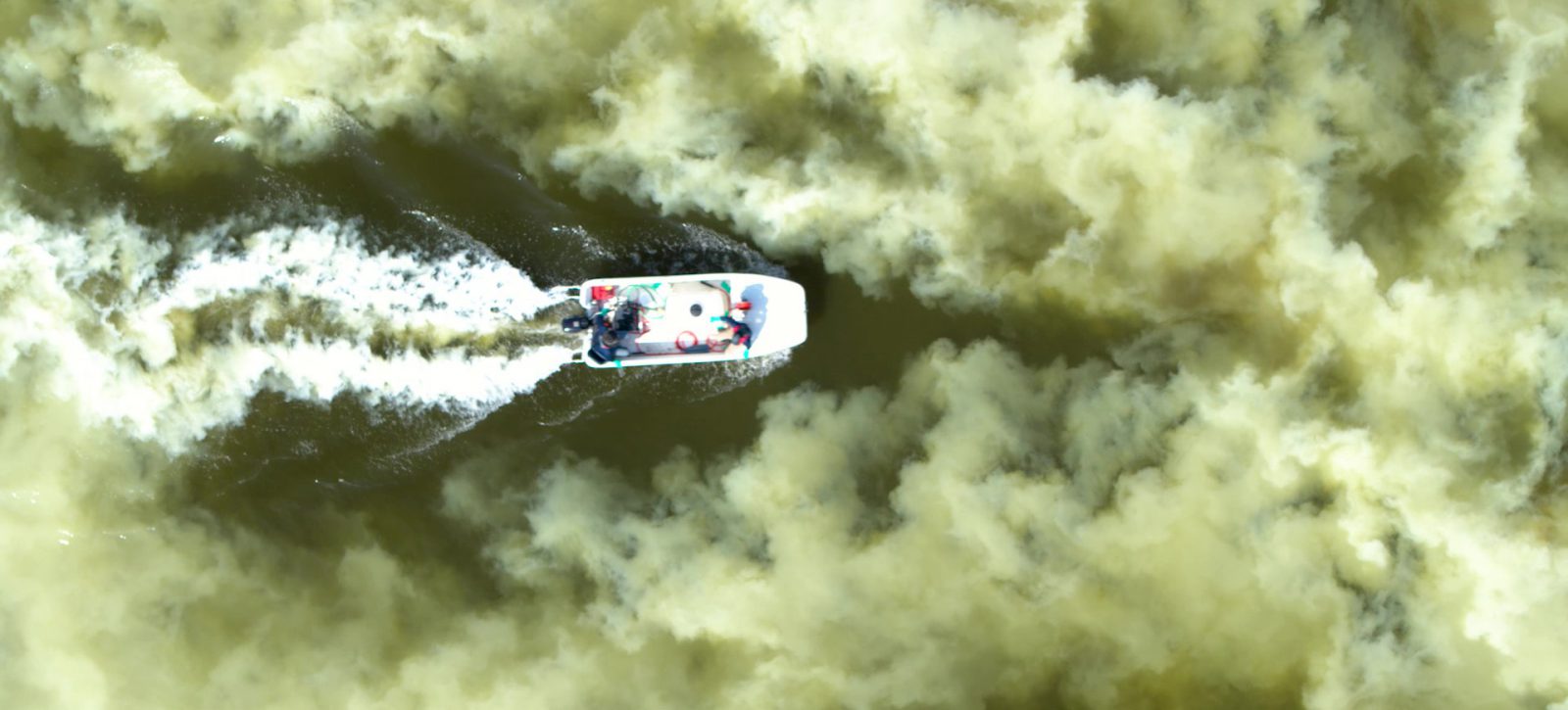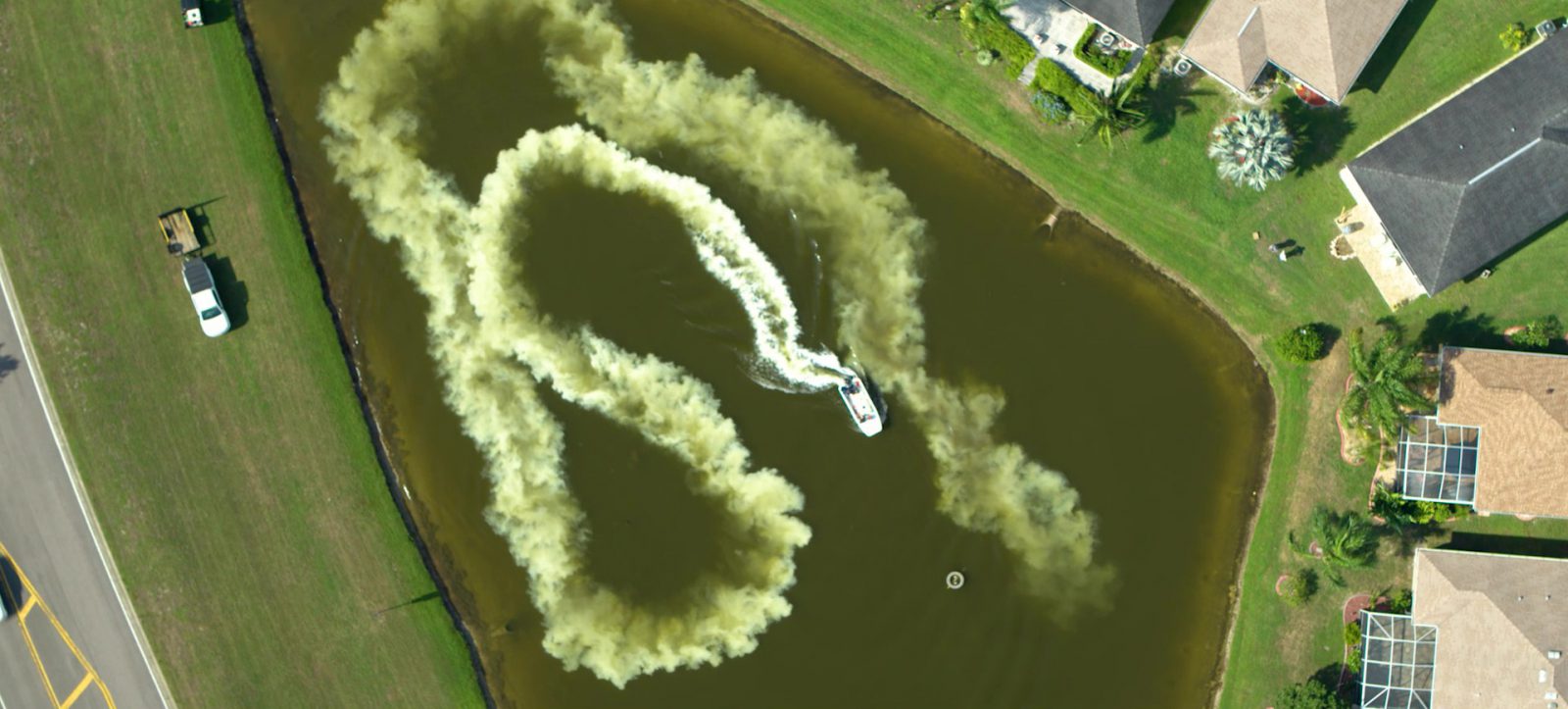
Pond Liming
Written by Bob Lusk, Fisheries Biologist and Editor of Pond Boss Magazine
Water is the lifeblood of every pond…every one. Clean, vibrant, healthy water yields healthy environments, which play significant roles in surrounding ecosystems.
Managing water quality is a key part of prudent pond management, but what exactly does that mean?Remember that scientists call water the “universal solvent.” Anything that can dissolve into water, will. That means minerals, metals, acids, bases, tree leaves, cotton socks, parts of old cars…lots of different things can dissolve. When something dissolves into water, the chemistry, and often the quality, changes. Water has other amazing qualities, too. As some organic stuff dissolves, water composts it. Fertilizer coming off fields, organic matter washed in from near shore, waste from the creatures beneath the surface…water processes this stuff and releases as much of it as it can.
When water tilts toward the acid side of the pH scale, normally due to surrounding soils and plant life, corrective action is needed.

Why Pond Liming?
Aquatic biologists recommend liming for ponds and lakes that reside in acidic areas. Typically, acidic water is surrounded by sandy soils and pine trees. Odds are, if your pasture soil needs lime, so does your pond.
Don’t just run down to the farm store, snag a bag of lime and toss it in the water. There’s some science behind it.
I’ll always remember a story about a local golf course superintendent who got fired because he killed the greens on six holes of the course. His replacement, a brash guy, did the same thing. It took too long to figure out the water they were using to irrigate the greens had way too much lime in it. They had to dig up the old turf, replace much of the dirt and then change the way they watered the new grass. It was a tough lesson.
What about your pond? If the pH is in the low 6’s or lower, consider liming.
Do your due diligence. There are lots of different types of lime. There’s quicklime, hydrated lime, dolomitic lime, aglime…lime this, lime that. Each type has its purpose. You have a specific purpose. Lime, in proper amounts, acts like Nature’s Rolaids. Lime, dissolved into water, buffers the wet stuff. Lime absorbs those acids, doing its part to stabilize your water chemistry. Stable water can take a lot of punches from nature. For example, just the simple, day to day biological activities of photosynthesis and respiration via aquatic plant life can send pH wildly up and down through the course of 24 hours.
Lime, calcium carbonate, mitigates those changes, keeping pH within a safe range. Biologists measure the amount of lime in your water at any given moment by checking the alkalinity. Alkalinity at least 20 parts per million is the benchmark to decide if, and how much, lime needs to be added. By the way, recommendations typically are made by “tons per acre,” based on what exists in your water. Quantify, seek advice and then choose your liming path. It’s a fairly simple, easy decision to make, given the proper knowledge and advice.
Bob Lusk, the “Pond Boss,” is in his 34th year as a fisheries biologist. He is the editor of Pond Boss magazine and has written three books on fisheries management.
Bob Lusk and Pond Boss Magazine are trusted partners of SOLitude Lake Management.
SOLitude Lake Management is a nationwide environmental firm committed to providing sustainable solutions that improve water quality, enhance beauty, preserve natural resources and reduce our environmental footprint. SOLitude’s team of aquatic resource management professionals specializes in the development and execution of customized lake, stormwater pond, wetland and fisheries management programs that include water quality testing and restoration, nutrient remediation, algae and aquatic weed control, installation and maintenance of fountains and aeration systems, bathymetry, shoreline erosion restoration, mechanical harvesting and hydro-raking, lake vegetation studies, biological assessments, habitat evaluations, and invasive species management. Services and educational resources are available to clients nationwide, including homeowners associations, multi-family and apartment communities, golf courses, commercial developments, ranches, private landowners, reservoirs, recreational and public lakes, municipalities, drinking water authorities, parks, and state and federal agencies. SOLitude Lake Management is a proud member of the Rentokil family of companies in North America.









